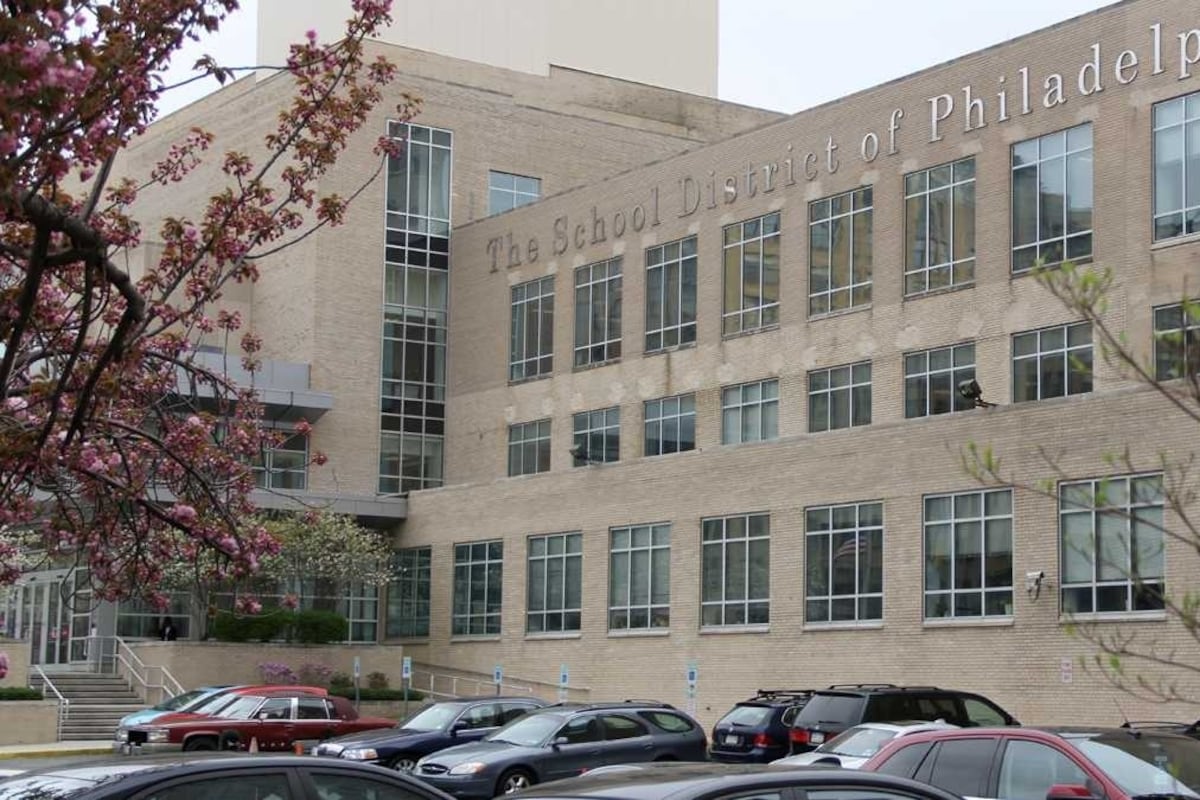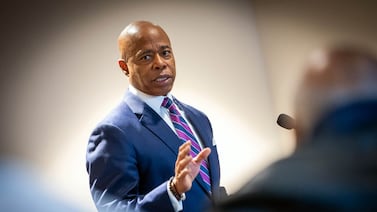At least 293 of 300 Philadelphia district buildings — most but not all of them schools — contain asbestos, officials said Tuesday, although inspectors have reexamined nearly all of those facilities for the potentially dangerous material since October 2021.
During a press briefing about asbestos in district facilities, Victoria Flemming, the interim executive director of the Office of Environmental Management, said that out of those 293 buildings, 277 schools have been reinspected, and six of those were schools that the district subsequently closed, she said. The goal is to inspect the remaining 16 by the end of August, she said.
The more inspections the district conducts, the more asbestos is likely to be found, she said, but “this is a step in the right direction. This is the school district taking the additional time and resources to address what has been a longstanding issue within the Philadelphia region.”
“There’s no simple fix,” Flemming said.
The district’s update comes in the wake of criticism from parents, advocates, and others about the district’s handling of the environmental hazard. The abrupt shutdowns of Building 21, Frankford High School, Mitchell Elementary School, and other schools have created major disruptions for students and families. They have also called into question the accuracy of previous inspection reports that indicated schools did not face asbestos-related dangers.
Flemming said that more than 200 of the district’s buildings were built before 1978, when builders commonly included asbestos in construction, and that many of them also contain lead paint, another potential hazard. The average age of district buildings is 73 years.
Under the Asbestos Hazard Emergency Response Act, or AHERA, the federal law regulating asbestos containment, every school must be inspected every three years, with “periodic surveillance” every six months. Flemming said the district at any given time has between eight to 12 inspection teams of two people each, depending on availability of personnel.
In order to be in full AHERA compliance, the district would need to average 50 inspections a month, she said, but the district currently lacks sufficient staffing and resources to do that, Flemming said.
“Our intent is to add more inspection teams,” she said, but added that meeting the AHERA requirements in full “is still a work in progress.”
The district has a three-year, $24.2 million contract with Tetra Tech, starting in 2022, a consultant and engineering firm, which is managing its inspections. The district also hired DeLuca Advisory & Consulting Services — where Flemming previously worked — to help the district manage the AHERA inspections and related record-keeping and data-tracking, which is a massive undertaking.
For instance, DeLuca is making sure that all inspections included the mandatory number of required samples from the required variety of locations. One large school can have as many as 3,000 building materials that require assessment and documentation. And the district is also studying the records of past inspections to make sure that they are valid, although Flemming said limited staffing and resources have made record-keeping a challenge.
“What we have actively done is gone back through our archive to confirm they have the correct number of samples based on today’s protocols,” she said. The district is also scrutinizing records “per floor, per room, per ceiling” to make sure that all necessary areas were inspected, she added.
Oz Hill, the district’s deputy chief operating officer, said the district organized Tuesday’s briefing in order to “communicate the depth and breadth of the challenges we face.”
The district’s staffing challenges and churn extend to the top of its organizational chart, and two key new administrators are set to join.
Former Deputy Superintendent of Operations Uri Monson and Chief Operating Officer Reggie McNeil left in January to join Gov. Josh Shapiro’s administration. In addition, Deputy Superintendent for Academic Services ShaVon Savage and Chief Talent Officer Larissa Shambaugh announced their departures in March. Shambaugh has already left and Savage will leave by the end of this month.
On Monday, Superintendent Tony Watlington announced the hiring of two new top administrators: Jeremy Grant-Skinner as deputy superintendent of talent, strategy and culture, and Nyashawana Francis-Thompson as chief of curriculum and instruction.
Grant-Skinner comes from the Houston district, where he has been chief talent officer. Before that, he was a teacher and then chief human capital officer in Baltimore in charge of recruitment and teacher development.
Nyshawana Francis-Thompson, who has been the interim chief of curriculum and instruction, was named to the position permanently by Watlington.
Dale Mezzacappa is a senior writer for Chalkbeat Philadelphia, where she covers K-12 schools and early childhood education in Philadelphia. Contact Dale at dmezzacappa@chalkbeat.org.








